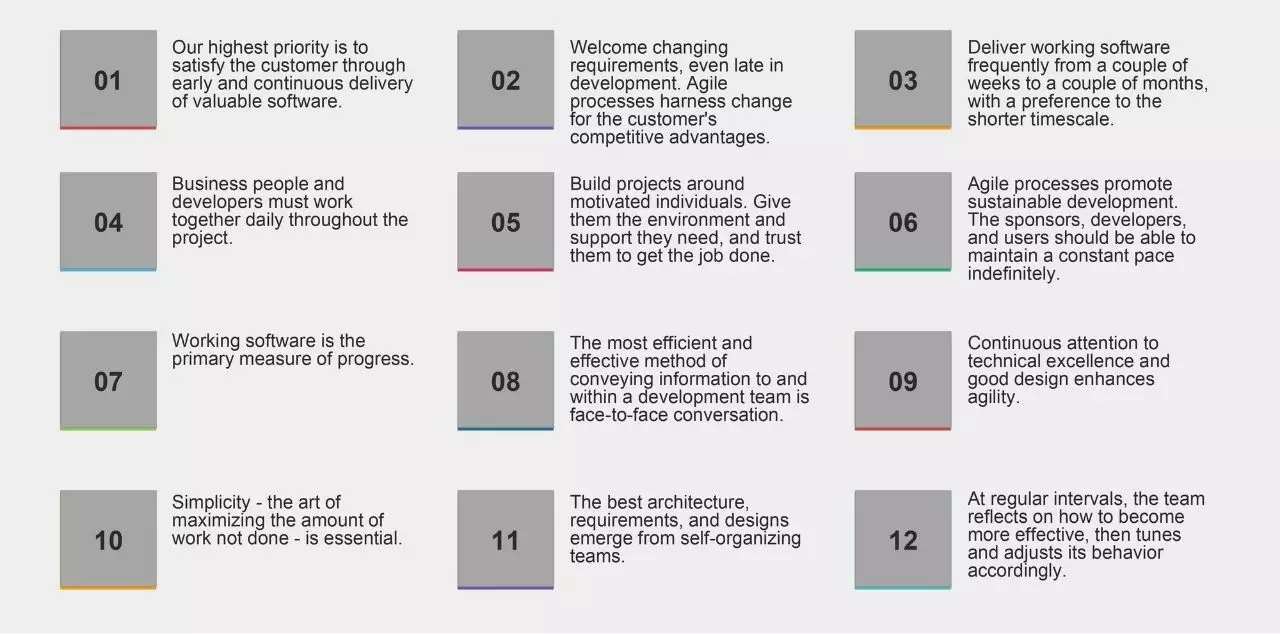“At regular intervals, the team reflects on how to become more effective, then tunes and adjusts its behavior accordingly.” -The Agile Manifesto
The majority of companies are adopting some sort of Agile methodology when it comes to software development. Nevertheless, research shows that an overwhelming percentage of organizations are not implementing agile principles and values correctly. Furthermore, many organizations go through numerous attempts to become Agile and keep failing. The main reason behind that is the lack of understanding of the organization’s current state. This is where an Agile Maturity Assessment comes into play, by presenting a baseline that can act as a starting point for planning or just provide sufficient information to adjust our course.
“Assessment” can have a negative connotation and is often associated with judgment or critique. However, Agile Maturity Assessment is just a reflection of how the team compares against the best practices of the Agile framework. Agile Maturity Assessment paints a clear picture of what is working well, and what needs adjustment.
What is Agile Maturity Assessment
Agile Maturity Assessment (AMA) is an exercise/tool to help a scrum team improve their ability to be more agile over time.
Converting to Agile requires adopting the values and principles of the Agile Manifesto. Thus, the assessment should be based on the adoption of Agile values, principles, concepts, and artifacts. Ideally, a team would want to keep track of all of them, however, in order for the team to be more focused, it is recommended to start with 10-20 key criteria for the assessment. Assess only items that can be acted upon and try to make it as simple as possible. The team will self-assess the level they are currently at on a scale from 1-5 for each one of the criteria selected for the assessment. The level for each criterion defines what steps the team can take to reach that level.
Why Agile Maturity Assessment

Agile transformations are complicated and it can take a long time to arrive at a place where the team is fully Agile. A team would need to understand where they are on their Agile journey. Therefore, it is important for an organization or team to be able to measure that progress, determine where they need to go, and the steps en voyage to the desired destination. Agile Maturity Assessment can serve as the map to navigate the team’s Agile journey to ensure that the team is on the right track. Moreover, it can serve as proof that the team is making progress.
Who should attend Agile Maturity Assessment
The Agile Maturity Assessment is a self-assessment tool, thus all the members of the team should actively participate in the assessment. For a Scrum team, this would include the Scrum Master, the Product Owner, and the team. There are multiple ways to run the assessment. AMA can be conducted by any other member of the team themselves – ideally the Scrum Master, or an objective outsider. It does help greatly to bring in an Agile expert, such as an Agile Coach, to help run the initial assessment and help the team define the rules of the assessment and the baseline.
How do you assess Agile maturity
The first thing to do is to agree on the assessment dimensions – those are the areas or criteria you want to track in the assessment. Those criteria should be based on the Agile principles or some related values, concepts, or artifacts.

The organization or the team should determine which criteria apply to their team to be tracked in the assessment.
Next, the team should agree on grading their level for each of the selected criteria. Typically, you would want to grade each criterion on a scale from 1-5.

Then, the team should define the baseline – meaning, the team’s current level for each one of the selected criteria. This can be accomplished by scheduling a team meeting. The team will review the criteria one at a time and vote on where they think the team’s AS-IS state is currently. The team should share the assessment baseline results and determine which of the criteria they should focus on next.
The team should vote to ascertain which of the criteria is the highest priory, the one with the most votes would be the target for the team. The team can plan to focus on one item for each sprint and the goal would be to move the team score up at least one level for that criteria.
The team should implement a plan on how to achieve the improvements and how to measure that. The team can use part of the retrospective meeting to monitor the improvement within the selected topic.
When the team takes the assessment again they can highlight any improvement during the assessment (compared to the most recent assessment) and adjust their goals and targeted improvements accordingly.
When an Agile Maturity Assessment practice can happen
Implementing an Agile Assessment practice can happen anytime regardless of how long Agile has been practiced. If an organization is relatively new to Agile, introducing this framework earlier in the overall Agile adoption roadmap is ideal.
We can share how we’ve helped our clients and demonstrate how we can help you land the Agile Assessment within your organization. Contact Us to set up a complimentary discussion on how we can enable you with a scalable and repeatable program that will result in continued optimization of your Agile delivery process.
